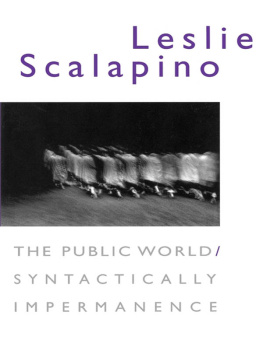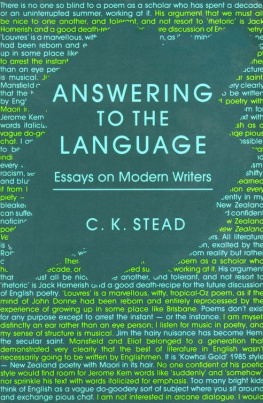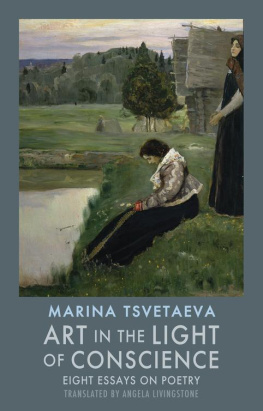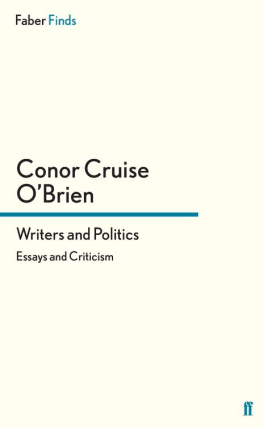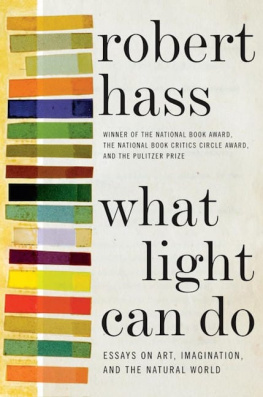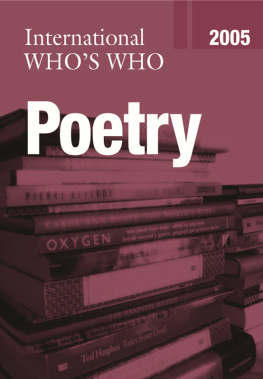
The Public World/Syntactically Impermanence
As: Ngrjunas destruction of all philosophical viewsobviously this would include all modes of articulation, and any definitions or procedures of discourse.
The Public World/Syntactically Impermanence
LESLIE SCALAPINO
Wesleyan University Press
Published by University Press of New England :: Hanover and London
Wesleyan University Press
Published by University Press of New England, Hanover, NH 0375 5
1999 by Leslie Scalapino
All rights reserved
Printed in the United States of America 5 4 3 2 1
CIP data appear at the end of the book
The author wishes to thank Tom White for his helpful reading of this text in manuscript.
A version of The Cannon was published in the American Poetry Review (Spring, 1998). Experience/On Sight is Leslie Scalapinos part of an introduction to SIGHT, a collaboration by Lyn Hejinian and Leslie Scalapino, published by Edge Books. A version of Thinking Serially in For Love, Words, and Pieces was published in Objects in the Terrifying Tense/Longing from Taking Place, Leslie Scalapino (New York: Roof Books, 1993); and Disembodied Poetics: Annals of the Jack Kerouac School, edited by Anne Waldman and Andrew Schelling (Albuquerque: University of New Mexico Press, 1994). A version of Footnoting was published in SHARK. Passages from The Radical Nature of Experience on Philip Whalen appear in Leslie Scalapinos introduction to Philip Whalens Overtime: The Selected Poems, edited by Michael Rothenberg (New York: Viking Penguin, 1999). A passage from Silence and Sound/Text appeared in Boundary.
A version of The Weatherman Turns Himself In was published by Zasterle Press, Canary Islands, Spain, 1995.
Passages from As: All Occurrence in Structure, Unseen(Deer Night) were published in Chain, Explosive Magazine, Boundary, and Fishdrum.
Cover photograph: Untitled, Petah Coyne, 1993, gelatin silver print. Courtesy of the Artist and GalerieLelong, New York.
:: Contents
I could stay at home and Id go out. Thered be a group of people in one setting or another who knew each other but gradually I began to feel withdrawn from them anyway.
It was easier to remember what had been said and Id feel satisfied after going somewhere.
Other people seemed completely internal which I noticed when Id observed a man for some time and saw that hed say something about himself and I thought that he should be that entirely and that other people dont go into a sort of public world.
I wanted to be wholly transparent so that I would tell people details of my activities whether I was casual or angry.
::
I feel that the people I see are all rightin the sense of not getting very oldas I get out of the area where there are shops, a few houses.
I dont see them walk or move a great deal; and they wear good clothes or everyday clothes.
At the time a man doing construction work in the street comes in that slow delayed way; he is in a sort of public world, working for awhile. Then not working for periods of time possibly.
From Considering how exaggerated music is
Leslie Scalapino (North Point Press, 1982)
Demonstration/Commentary
:: The Radical Nature of Experience
Activity is the only community. The conservative gesture, always a constant (any ordering, institutional and societal) is to view both activity and time per se as a condition of tradition. As such, both time and activity are a lost mass at any time. For just as modern man has been deprived of his biography, his experience has likewise been expropriated.
My focus is on non-hierarchical structure in writing. For example, the implications of time as activitythe future being in the past and present, these times separate and going on simultaneously, equally active (in reference to Whalens writing, and similar to Dgens conception of time and being)suggest a non-hierarchical structure in which all times exist at once. And occur as activity without excluding each other. This is unrelated to social power (it can possibly transcend it) but is related to social intelligibility at some time. Social marginality is a state not producing necessarily, but related to, thought/form as discovery.
In Susan Howes poetry, vault line divergence (dual marginality?) is tracking of observation itself as making a present-time.
Lyn Hejinian described to me her work in progress, The Border Comedy, as being instigated by the notion of a collaboration in which one sends one line to someone else and the other person adds to it; yet in The Border Comedy she writes one line, then allows time to pass and comes back to it. But she was having trouble making the line unfamiliar to herself. She couldnt get a line sufficiently unfamiliar, so began to work on all fifteen books of The Border Comedy (it is intended to be modeled on the fifteen books of Ovids Metamorphoses) at the same time, perhaps only returning to one spot in the work a couple of weeks after it was written and only looking at a few lines on the computer at once (in order not to remember the background). In order to keep writing fresh the memory of it has to fade. Unfamiliar, it is of the moment.
In language horizontal and vertical time can occur at the same moment. Hejinian says that the unfamiliarity of the writing is a prompt; it prompts the future.
A lost mass (Paris gone) Shine red in young swallows mouth:
One of Philip Whalens poems might be written over a period of several years in a notebook, then typed and chopped into separate lines, which, arranged on the floor, are comparisons of different moments or periods of time and his mind at those times. Thoughts would have similarities and differences in two times, say. It is not collage, Whalen made the distinction speaking to me. Collage would be a completed woven or superimposed fabric (when read later); in his poems, the levels in the writing maintain their first imprint, the pattern of what the mind was doing at those different times. Is the distinction that a collage is more passive as a construction in the sense that the viewer sees it later, rather than active comparison on the part of the reader and writer in reading as real-time, an activity?
Whalen comments within Scenes of Life at the Capital that the process of copying from the manuscript to the typewriter suppresses the material: the copy is transmogrified throughout (with a sense of its original shape retained, its first imprint having been there); the physical original (written by hand in a notebook, before being translated into typeface) is also activity, it is physical imitation/which is fiction too. That is, it is fiction only; theres no original.
In Whalens writing, comparable to Dgens articulation of being as time (the poetry not being a description of anything outside, but a demonstration of ones mind doing thisthe syntax and structure duplicating the process that is the readers own mind-phenomena), the nature of the present is only disjunctive; the times occurring separately are at the same time.
Every place is the same
Because I felt the same, remembering everything
We boated for hours on the Lake of Constance
Remembering everything, all layers at the same time, writing is the minds operations per se and imitation of it at the same time.
Fits of psychic imperialism
theres no point in returning until I find out
why did I have to come all the way back here
endless belt of punchcards travels through the neighbors loom
Next page
